Content marketing is a powerful tool for driving brand awareness, nurturing leads, and ultimately generating sales.
However, simply creating great content isn't enough—understanding your content marketing ROI (return on investment) is crucial. By quantifying the effectiveness of your content efforts, you can allocate resources more efficiently and ensure that every piece of content contributes to your business goals.
In this guide, you'll learn:
- What is the ROI of content marketing?
- How to measure your content marketing ROI and what metrics to consider.
- The role of a content marketing ROI calculator in making data-driven decisions.
- How to tailor your measurement strategies for different business models.
- 10 ideas to improve your content marketing ROI that you can implement today.
Our goal is to help you understand and maximize the effectiveness of your content marketing strategy, turning every dollar spent into measurable value.
What Is the ROI of Content Marketing

Before diving into measurement techniques and strategies, it's important to answer the fundamental question: What is the ROI of content marketing?
Definition and Importance
Content marketing ROI refers to the return you get from your investments in creating, distributing, and promoting content. It's a metric that helps you determine whether the content you produce is driving the desired outcomes—be it increased traffic, higher engagement, more leads, or direct revenue growth.
Understanding ROI content marketing is essential because it:
- Provides accountability: You can justify budgets and strategic decisions.
- Identifies strengths and weaknesses: Determine which pieces of content perform well and why.
- Drives strategy: Helps tailor your approach based on performance data.
Key Components of Content Marketing ROI
When evaluating your ROI of content marketing, consider the following factors:
- Cost of Content Creation: Expenses related to producing high-quality content (writing, design, video production, etc.).
- Distribution Costs: Expenses for promoting your content through various channels (social media ads, email campaigns, etc.).
- Conversion Rates: The percentage of your audience that takes the desired action (subscribing, purchasing, etc.).
- Lifetime Value of Customers: The revenue generated over the long term from a customer acquired through your content marketing efforts.
By analyzing these components, you can better understand the overall effectiveness of your content marketing strategy.
How to Measure Your Content Marketing ROI

Measuring content marketing ROI might seem challenging at first, but it's all about breaking down the process into manageable steps. In this section, we'll cover how to measure your content marketing ROI effectively and share some of the best practices along the way.
Define Your Goals
Before you can measure ROI, you need to establish what success looks like for your business.
Ask yourself:
- Are you focused on driving brand awareness, lead generation, or direct sales?
- What key performance indicators (KPIs) will signal success for your content?
- How does content support your broader business objectives?
Having clear goals will help you determine which metrics to track and how to calculate your ROI.
Track the Right Metrics
Some of the most important metrics to consider when measuring content marketing ROI include:
- Website Traffic: Monitor unique visitors, page views, and bounce rates.
- Engagement Metrics: Track time on page, social shares, comments, and likes.
- Lead Generation: Measure sign-ups, downloads, or form completions.
- Conversion Rates: Evaluate how many visitors become customers.
- Revenue: Direct sales attributed to your content.
Use a Content Marketing ROI Calculator
A content marketing ROI calculator can simplify this process by automating the calculations. These calculators take into account costs and revenue data, enabling you to quickly assess whether your content initiatives are paying off.
Below is an example table showing how a basic content marketing ROI calculator might be structured:
|
Metric |
Value |
Notes |
|
Content Creation Cost |
$10,000 |
Total cost of producing content |
|
Distribution Cost |
$2,000 |
Expenses for promoting content |
|
Total Investment |
$12,000 |
Sum of creation and distribution costs |
|
Revenue Attributed to Content |
$30,000 |
Revenue generated from content efforts |
|
ROI Calculation |
150% |
(Revenue - Investment) / Investment) x 100 |
Analyze and Adjust
Once you have gathered data, analyze it to see what's working and what's not. Look at trends over time and compare different types of content. If certain pieces or strategies are underperforming, it might be time to adjust your approach.
Understanding the Metrics Behind Content Marketing ROI

To truly master content marketing ROI, you need to dive deep into the metrics that matter. Let's break down some of the most critical metrics and discuss how they influence your overall ROI.
Website Traffic and Engagement
Website traffic is often the first indicator of success in your content marketing strategy. However, raw numbers only tell part of the story. Engagement metrics, such as time on site, pages per session, and bounce rate, provide context about how valuable and engaging your content is to your audience.
- Traffic Sources: Identify where your traffic is coming from (organic search, social media, referrals, etc.) to better understand which channels are most effective.
- User Engagement: High engagement typically signals that your audience finds your content useful, which can translate to higher conversions.
Lead Generation and Conversion Metrics
Ultimately, content marketing should drive conversions. Measuring how to measure content marketing ROI includes tracking:
- Lead Quality: Not all leads are created equal. High-quality leads have a greater potential to convert into paying customers.
- Conversion Funnel: Analyze each step of your customer journey—from initial engagement to final purchase—to identify where you might be losing potential customers.
Cost Per Acquisition (CPA)
CPA is a crucial metric that compares the cost of acquiring a customer against the revenue they generate. A lower CPA indicates a more efficient content strategy, while a high CPA might signal the need for optimization.
Customer Lifetime Value (CLTV)
Customer lifetime value helps you understand the long-term benefits of your content marketing efforts. Even if your initial conversion rate isn't sky-high, a strong CLTV can justify investments in content marketing ROI over time.
Content Marketing ROI Calculator
A content marketing ROI calculator is a valuable tool for quantifying the success of your content initiatives. These calculators typically use a formula that takes into account both the costs and revenues associated with your content marketing efforts.
How to Build Your Own ROI Calculator
If you prefer a hands-on approach, you can build your own calculator using spreadsheet software like Microsoft Excel or Google Sheets.
Here's a simple formula to get started:
ROI = ((Revenue from Content - Total Content Investment) / Total Content Investment) x 100
Consider the following scenario:
- Content Creation Cost: $15,000
- Distribution Cost: $5,000
- Total Investment: $20,000
- Revenue Generated: $50,000
Using our formula:
ROI=(50,000−20,00020,000)×100=150%\text{ROI} = \left(\frac{50,000 - 20,000}{20,000}\right) \times 100 = 150\%ROI=(20,00050,000−20,000)×100=150%
This means that for every dollar spent, you're generating $1.50 in profit.
Advantages of Using a Content Marketing ROI Calculator
- Efficiency: Quickly process large amounts of data.
- Accuracy: Reduce manual errors in calculation.
- Decision-Making: Provide clear insights that help you allocate your budget more effectively.
Measuring Content Marketing ROI for Different Business Models

Different business models require tailored approaches when it comes to measuring content marketing ROI. Whether you operate in B2B, B2C, or SaaS, understanding the nuances of your industry can significantly impact your strategy.
B2B (Business-to-Business)
For B2B companies, the sales cycle is often longer and more complex.
In this context, measuring ROI might focus on:
- Lead Generation: Emphasize the quality of leads rather than quantity.
- Nurturing Campaigns: Track the effectiveness of content in moving prospects through the sales funnel.
- Account-Based Metrics: Use metrics that focus on high-value accounts and targeted engagement.
B2C (Business-to-Consumer)
In the B2C world, the focus is typically on volume and immediate conversions.
Key metrics include:
- Traffic and Engagement: High website traffic and social media engagement are crucial.
- Quick Conversions: Evaluate how quickly visitors take action, such as making a purchase or subscribing.
- Customer Reviews and Social Proof: Use user-generated content (UGC) and testimonials to build trust.
SaaS (Software as a Service)
For SaaS companies, the emphasis is on subscription models and recurring revenue.
When measuring saas content marketing ROI, consider:
- Free Trial to Paid Conversion: Track how well your content encourages trial users to become paying customers.
- Churn Rate: Evaluate the retention rate of subscribers acquired through your content.
- Customer Success Metrics: Assess how content supports customer onboarding and engagement.
By understanding these differences, you can customize your strategies for measuring content marketing ROI effectively across different business models.
10 Ideas to Improve Your Content Marketing ROI

Now that you know how to measure your content marketing ROI and understand the key metrics involved, it's time to explore actionable ideas that will help you boost your results.
Below are 10 ideas to improve your content marketing ROI—each designed to address different aspects of your strategy.
Optimizing Content for SEO
Search engine optimization (SEO) is fundamental to attracting organic traffic.
To optimize your content:
- Keyword Research: Use tools like Google Keyword Planner or SEMrush to find relevant keywords. Don't forget to integrate ROI content marketing and its variations naturally throughout your content.
- On-Page SEO: Ensure your titles, meta descriptions, and headings are optimized for search engines.
- Internal Linking: Link to other relevant articles on your site to boost SEO and reduce bounce rates.
Quick Checklist for SEO Optimization
- Conduct thorough keyword research.
- Optimize meta tags and headings.
- Use descriptive URLs.
- Include internal and external links.
- Regularly update content for relevancy.
Repurposing Content
Maximize your content's reach by repurposing it in multiple formats.
For example:
- Turn blog posts into infographics.
- Convert webinars into video snippets.
- Create social media posts from key takeaways.
- Develop eBooks from a series of related articles.
This not only extends the life of your content but also helps you reach audiences on different platforms.
Personalizing Content Experiences
Personalization can dramatically increase engagement. Use data-driven insights to tailor your content for different segments of your audience. Consider:
- Dynamic Content: Deliver personalized content based on user behavior.
- Email Segmentation: Send targeted content that speaks directly to each segment's interests.
- Customized Landing Pages: Create landing pages that reflect the specific needs of your visitors.
Engaging with Your Audience Through Social Media

Social media is a powerful channel for boosting content marketing ROI.
Here are some tactics to consider:
- Interactive Content: Use polls, Q&A sessions, and live videos to engage your audience.
- Consistent Posting: Maintain a regular posting schedule across platforms.
- Community Building: Foster a sense of community by encouraging user comments and discussions.
- Paid Social Advertising: Use targeted ads to expand your reach and attract new followers.
Leveraging User-Generated Content (UGC)
User-generated content is a valuable asset that can enhance your credibility and drive engagement.
To incorporate ROI in content marketing:
- Encourage Reviews and Testimonials: Ask your satisfied customers to share their experiences.
- Social Media Contests: Run contests where users create content around your brand.
- Feature UGC on Your Website: Showcase customer stories and reviews on your site.
Increasing Content Distribution Channels
Don't limit yourself to a single platform. Expand your reach by distributing content across multiple channels:
- Email Newsletters: Regularly update your subscribers with new content.
- Content Syndication: Partner with industry publications to republish your articles.
- Guest Blogging: Write guest posts for reputable blogs in your industry.
- Content Aggregators: Submit your content to platforms like Medium or LinkedIn Pulse.
Testing and Optimizing CTAs and Landing Pages
Effective calls-to-action (CTAs) and landing pages are crucial for converting visitors.
Consider the following:
- A/B Testing: Experiment with different CTAs to see which ones resonate best with your audience.
- Clear Messaging: Ensure your CTAs are clear and compelling.
- Responsive Design: Optimize landing pages for mobile devices.
- Speed Optimization: Reduce load times to prevent visitor drop-off.
Enhancing the Quality and Consistency of Content
High-quality content builds trust and drives long-term ROI. Focus on:
- Consistency: Publish regularly to keep your audience engaged.
- Research: Base your content on credible sources and data.
- Visual Appeal: Use high-quality images, videos, and infographics.
- Editing: Ensure your content is free of errors and easy to read.
Measuring and Adjusting Strategy Based on Data
Data is your best friend when it comes to optimizing how to measure your content marketing ROI.
Make sure to:
- Regularly Review Analytics: Use tools like Google Analytics and CRM systems to monitor performance.
- Identify Trends: Look for patterns in what works and what doesn't.
- Be Agile: Adjust your strategy based on real-time data.
- Set Benchmarks: Establish performance benchmarks to track progress over time.
Collaborating with Influencers and Thought Leaders
According to AdParlor, partnering with influencers and thought leaders can extend your reach and add credibility to your brand.
Here's how:
- Identify Relevant Influencers: Look for influencers who align with your brand values and target audience.
- Co-create Content: Work together on blog posts, webinars, or social media campaigns.
- Leverage Their Network: Use influencer partnerships to tap into new audiences.
- Measure Impact: Track the performance of collaborative content to evaluate its contribution to your ROI content marketing.
Get the Content Marketing ROI That You've Always Dreamed Of
In today's competitive business landscape, understanding and improving your content marketing ROI is crucial. By grasping what the ROI of content marketing is and learning how to measure content marketing ROI through key metrics and tools like a content marketing ROI calculator, you can make informed decisions that drive growth.
Remember, it's not just about creating content—it's about creating content that converts and provides measurable value to your business.
Need help with your content marketing?
Contact us to find out how we can skyrocket your content marketing ROI to the moon.

Garreth Aspeling
Garreth has 6 years of experience crafting compelling SEO-based blog posts and articles for various audiences. From cryptocurrency to SaaS and everything in between, Garreth always creates high-quality content for his clients. He is also engrossed in books, hiking trails, and spending time with loved ones.











2.png)
2.png)









